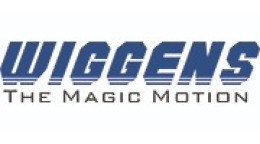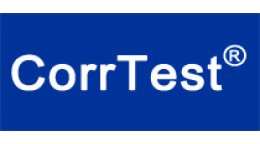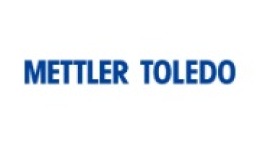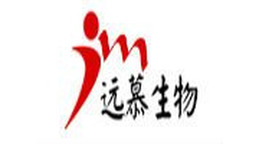方案详情文
智能文字提取功能测试中
◎2018. Published by The Company of Biologists Ltd.This is an Open Access article distributed under the terms of the Creative Commons Attribution License(http://creativecommons.org/licenses/by/3.0),which permits unrestricted use, distribution and reproductionin any medium provided that the original work is properly attributed. A JCS Advance Online Article. Posted on 13 March 2018 Tools and Resources Rapid Production of Pure Recombinant Actin Isoforms in Pichia pastoris 在毕赤酵母细胞中快速生产纯重组肌动蛋白亚型 Tomoyuki Hatano*1, Salvatore Alioto2, Emanuele Roscioli1, Saravanan Palani1, Scott T.Clarke1, Anton Kamnev1, Juan Ramon Hernandez-Fernaud3, Lavanya Sivashanmugam1,Bernardo Chapa-Y-Lazo1, Alexandra M.E. Jones3, Robert C. Robinson4,5,6, KarunaSampath1, Masanori Mishima1, Andrew D. McAinsh1, Bruce L. Goode? and Mohan K.Balasubramanian*1 1Centre for Mechanochemical Cell Biology and Division of Biomedical Sciences, Warwick Medical School,University of Warwick, Coventry CV4 7AL, UK. 2Department of Biology, Brandeis University, Waltham, MA.3School of Life Sciences, University of Warwick, Coventry, UK CV4 7AL. 4Institute of Molecular and CellBiology, A*STAR (Agency for Science, Technology,and Research), Singapore 138673, Singapore.5Department of Biochemistry, National University of Singapore, Singapore 117597, Singapore. 6ResearchInstitute for Interdisciplinary Science, Okayama University, Okayama, 700-8530,Japan. 本篇文章是英国华威大学、美国布兰代斯大学、新加坡国立大学、日本冈山大学联合研究*Author for correspondence: Tomoyuki Hatano (T.Hatano@warwick.ac.uk) and Mohan Balasubramaniar(m.k.balasubramanian@warwick.ac.uk) 肌动蛋白是真核细胞骨架蛋白的重要组成部分,具有多种重要的细胞功能,包括细胞分裂、细胞极性、伤口愈合、肌肉收缩等。 本篇文章介绍了一种改进的肌动蛋白表达和提纯方法,使用 SPEX 冷冻研磨仪研磨法破碎酵母细胞,适用于所有配备分子生物学设备的实验室中,这将极大地促进激动蛋白细胞骨架的升华和细胞生物学研究。 Abstract Actins are major eukaryotic cytoskeletal proteins, which perform many important cellfunctions, including cell division, cell polarity, wound healing, and muscle contraction.Despite obvious drawbacks, muscle actin, which is easily purified, is used extensivelypresently for biochemical studies of actin cytoskeleton from other organisms / cell types.Here we report a rapid and cost-effective method to purify heterologous actinsexpressed in the yeast Pichia pastoris. Actin is expressed as a fusion with the actin-binding protein thymosin β4 and purified using an affinity tag introduced in the fusion.Following cleavage of thymosin β4 and the affinity tag, highly purified functional full-length actin is liberated. We purify actins from S. cerevisiae, S. pombe, and the -and y-isoforms of human actin. We also report a modification of the method that facilitatesexpression and purification of arginylated actin, a form of actin thought to regulate actindendritic networks in mammalian cells. The methods we describe can be performed inall laboratories equipped for molecular biology, and should greatly facilitate biochemicaland cell biological studies of the actin cytoskeleton. Introduction Actin is one of the most abundant eukaryotic proteins, which assembles into one of themain cytoskeletal polymers in eukaryotic cells. The actin cytoskeleton is vast, and cellsexpress hundreds of proteins that associate with actin to control its polymerization,stability, spatial organization, and harness it to a wide spectrum of biological tasks,including muscle contraction, intracellular transport, cell motility, cell and tissuemorphogenesis, cell adhesion, transcriptional regulation, and DNA damage (reviewed inMisu et al., 2017; Rottner et al., 2017; Skruber et al., 2018). As such, the study of actinhas extended itself into almost all branches of biological research, creating a major needfor biochemically characterizing the actin regulatory effects of numerous proteins fromdiverse model organisms, e.g., yeast, flies, worms, and mammals. To date, the majorityof studies have used skeletal muscle actin (isolated from rabbits or chickens), becauselarge quantities can be isolated at a reasonable cost-effectiveness. However, there aresome major drawbacks to using muscle actin, including the heterogeneity in its post-translational modifications, and key differences in the properties of muscle actin fromnon-muscle actin isoforms and actin in different species (Bergeron et al., 2010; Kijima etal.,2016; Muller et al., 2013; Takaine and Mabuchi, 2007; Ti and Pollard, 2011; Wen etal.,2008; Wen and Rubenstein, 2005). These considerations have led to a need todevelop new methods to purify actins, so that physiologically relevant biochemical andcell biological studies may be undertaken. In this manuscript we describe a method to purify recombinant actin through expressionin the yeast Pichia pastoris. We purify S. cerevisiae, S. pombe, and p-and y-isoforms ofhuman actin in a form that is functional in vitro and in vivo. Results To develop an easy and cost-effective method for purification of recombinant actins, weused the methylotrophic yeast Pichia pastoris, which is an excellent organism to expressheterologous proteins (Gellissen, 2000; Macauley-Patrick et al., 2005). To reduce cross-contamination with endogenous P. pastoris actin, we introduced a strategy that blocksco-polymerization of recombinant actin with the host actin, both during cell growth andduring purification. This was achieved by fusing the actin monomer binding proteinthymosin β4 (Tβ4) sequence to the C-terminus of the actin coding sequence, with ashort intervening in-frame linker [schematic in Figure 1A; (Noguchi et al., 2007)]. Fusionof actin to Tp4 leads to intramolecular interactions preventing polymerization of theheterologous actin. A His tag (eight consecutive Histidine repeat, 8His) was furtheradded to the C-terminus of the actin-Tβ4 fusion to facilitate affinity purification.Importantly, since the actin coding sequence ends witha highly conservedphenylalanine residue(cleavage site for chymotrypsin), and since all otherphenylalanine residues are buried (Jacobson and Rosenbusch, 1976), incubation of thefusion protein with chymotrypsin releases native, untagged actin. This Tp4-fusionpurification approach has been used for heterologous actin expression in Dictyosteliumand insect cells (Huang et al., 2016; Kijima et al.,2016;Noguchi et al., 2007; Xue et al.,2014). However, we reasoned that heterologous actin expression in P. pastoris wouldprovide a much easier alternative, which could be used in virtually any laboratoryequipped for molecular biology. As a test case, we first expressed actin from Saccharomyces cerevisiae (UniProtKBentries: ACT_YEAST) where the actin cytoskeleton has beeni ce+xCtensively characterizedthrough genetics, biochemistry, and microscopy (Engqvist-Goldstein and Drubin, 2003;Moseley and Goode, 2006). Furthermore, since several biochemical studies in S.cerevisiae have used native actin purified from yeast cells, we reasoned that the vastexisting knowledge of S. cerevisiae actin properties would help evaluate the functionalityof the heterologously expressed S. cerevisiae actin. We were able to purify S. cerevisiaeactin to near homogeneity after only a small number of steps, including binding to Ni-NTA resin, cleavage with chymotrypsin, and a cycle of polymerization anddepolymerization (Figure 1B). The Ni-NTA bound fraction did not contain a prominentband at ~42 kDa, suggesting that native P. pastoris actin (UniProtKB entries:ACT_KOMPG) did not co-purify appreciably (Figure 1B). Next, we compared thepolymerization properties of S. cerevisiae actin purified from S. cerevisiae (“Native”)versus S. cerevisiae actin purified from P. pastoris (“Recombinant"). We found that actinfilament elongation rates were nearly identical, both in the presence and absence of ayeast formin (Bnr1) and yeast profilin (Pfy1) (Figure 1C and D). As expected, addition ofPfy1 alone, without the formin, marginally reduced the rate of elongation of native andrecombinant Act1 polymers (Figure 1C and D), which we have also observed for profilinsfrom several different species. We also found that there was no difference in averagefilament length over time for native and recombinant Act1 (Figure 1C and D). Based onthese results, we conclude that recombinant Act1 has polymerization propertiescomparable to native Act1, and thus can be used reliably for biochemical studies. To test the versatility of the heterologous actin expression system, we also attempted toexpress and purify fission yeast Schizosaccharomyces pombe actin (UniProtKB entries:ACT_SCHPO,“SpAct1"), since this organism has been used extensively in studies ofthe actin cytoskeleton and cytokinesis (Mishra et al., 2014; Pollard and Wu, 2010). Weexpressed and purified SpAct1 as actin-Tβ4-His fusion using the same steps used topurify S. cerevisiae actin (Figure 2A). Similar to S. cerevisiae Act1, the Ni-NTA boundfraction did not show major contamination with P. pastoris actin (Figure S1A; lanemarked as uncleaved). N-terminal integrity was confirmed by immunoblotting usinghuman y-actin antibodies; S. pombe actin was recognized by antibodies against humany-actin, consistent with the N-terminal sequence conservation between S. pombe andhuman y-actin (Figure 2A). We note that SpAct1Vwas more prone to proteolysiscompared to S. cerevisiae Act1(Figure 2A), possibly reflecting some exposure ofadditional chymotrypsin sites. We next asked whether we could express and purify the two human non-muscle actinisoforms, p-and y-actin (UniProtKB entries: ACTB_HUMAN and ACTG_HUMAN,respectively). It is noteworthy that preparations of human non-muscle actins expressedin insect cells typically contain co-purifying host actin (Bergeron et al., 2010) and actinpurified from human non-muscle cells or animal sources contains a mixture of p-and y-isoforms. Similar to the yeast actins, the Ni-NTA bound fraction showed no majorcontamination with P. pastoris actin (Figure S1A; lane marked as uncleaved). Massspectrometric analysis of p-and y- actin detected all peptides derived from trypsin orchymotrypsin digestion of the expressed actins including N-terminal unique peptides.Mass spectrometry results are shown in supplemental table 1 and 2, and homogeneityof the purified actin is discussed in the legend to Figure S2 (see also Figure 4C).Immunoblotting of the purified actins with monoclonal antibodies against human β- andy- actin supports N-terminal integrity of these proteins (Figure 2A). To test the biochemical activities of purified SpAct1, and human p- and y-actins, weperformed sedimentation assays in the presence or absence of the actin polymerizationinhibitor Latrunculin A (LatA) (Figure 2B). In low ionic strength buffer (G-buffer), likerabbit muscle actin, all recombinant actins remained in the supernatant fraction afterultracentrifugation. However, under polymerization conditions, after the addition of MgCl2and KCl, the muscle actin and recombinant actins shifted primarily to the pellet fractionsindicating polymerization (Figure 2B). Furthermore, although solvent DMSO alone didnot affect pelleting, incubation with Latrunculin-A blocked the polymerization of all actins.Further, in vitro polymerization assays, monitored by rhodamine-phalloidin staining,demonstrated that the recombinant S. pombe and human p- and y-actins polymerizednormally into filaments (Figure2C). To examine whether p- and y-actins can be incorporated into cellular actin cytoskeletalnetworks, we labelled p- andy-actins with Alexa Fluor 488 and Tetramethylrhodamine(TMR), respectively (schematic representation of the strategy is shown in Figure 3A andβ-actin labelled with Alexa Fluor 488 is shown in Figure 3B), and injected into zebrafishembryos. We found that both actin isoforms could be efficently incorporated into theactin cytoskeleton at cell-cell contacts (Figure 3C). In addition, we injected β- and y-actins labelled with Alexa Fluor 488 and TMR, respectively, into human RPE1 cells. Theinjected actins co-localized and assembled into native actin cytoskeleton-like structuresand time-lapse imaging revealed their incorporation into dynamic filamentous structures (Figure 3D and supplemental movie). From these results, we conclude that the labelledp- and y-actins are active and readily decorate filamentous actin networks in RPE cellsand zebrafish embryos. Having established a simple method to purify large quantities of heterologous actins in P.pastoris, we next adapted this method to the production of arginylated actin, sincehuman p-actin exists in both arginylated and non-arginylated forms (Karakozova et al.,2006). Arginylated actin appears to play key roles in actin filament assembly in theleading edge dendritic networks. To express and purify arginylated B-actin, we created aconstruct, which directs expression of a quadruple fusion containing S. cerevisiaeubiquitin-R-B-actin-Tβ4-His (Figure 4A). This fusion protein was expressed in P.pastorisand the ubiquitin moiety was cleaved by the endogenous ubiquitin-specific protease(Bachmair et al., 1986). R-B-actin-TB4-His was then purified as before and followingcleavage with chymotrypsin, R-humanβ-actin (R-Actb)\wasIisolated to nearhomogeneity (results of mass spectrometric analysis are shown in supplemental table 1and 2 and the assessment of the homogeneity of the purified actin is discussed in thelegend to Figure S2). An antibody against arginylated actin strongly recognized R-Actb,but only very weakly recognized unmodified Actb (Figure 4B). Mass spectrometricanalysis detected the N-terminal arginylated peptide (Figure 4C and supplemental table1). These results strongly indicated the N-terminal integrity of the R-Actb. Note that R-Actb runs slightly faster in SDS-PAGE probably reflecting different structural states ofunmodified and arginylated p-actin in complex with SDS (Figure 4B and Figure S1B).The faster migration of R-Actb has also been reported by other investigators (Saha et al.,2010) We also found the R-Actb could be polymerized in vitro, suggesting that R-Actbpurified from P. pastoris is functional (Figure 4D). Discussion In summary, we have developed a simple and rapid method, which requires onlystandard laboratory equipment, to purify large quantities of any specific actin isoform.The plasmids we describe will be deposited in Addgene. Investigators should be able toclone any actin gene of interest into these vectors, transform P. pastoris, and quicklypurify the actin for biochemical characterization, and/or labelling and introduction intocells for live imaging. We successfully purified human non-muscle p- and y-actins, and actins from S.cerevisiae and S. pombe. Approximately 0.5-1 mg of actin is purified from a 1 L cultureof cells grown in standard flasks (about 10 g of cells from 1 L saturated culture). Usingthe method we describe, actin from virtually any eukaryotic organism can be isolatedand used to study the biochemical effects of actin binding proteins from the samespecies, improving the physiological relevance of the results. This method will alsoenable studies comparing the different actin isoforms, isolated to homogeneity, in theabsence of other contaminating isoforms. Furthermore, we used this method to producearginylated actin, which opens exciting avenues to characterizing actins with differentpost-translational modifications (Karakozova et al., 2006; Saha et al., 2010; Zhang et al.,2010). Finally, this method will enable purification to homogeneity of actins carrying pointmutations that cause different human diseases (Laing et al., 2009; Nowak et al., 1999;Riviere et al.,2012), and use these purified mutants in biochemical drug screens. Thus,basic and translational studies will be positively impacted by the simple actin purificationmethod we describe. Actins undergo a variety of post-translational modifications and although some post-translational modifications occur in Pichia pastoris, other modifications do not. In future,it will be important to develop synthetic biology tools (such as expression of mammalianactin acetyl transferases and methyl transferases as well genetic code expansion forincorporation of modified amino acids) to express and purify actins carrying othermodifications. Such tools will both facilitate elucidation of function of various actinmodifications as well as promote physiologically relevant biochemical and cell biologicalexperiments. Methods Plasmid used in this study Actin coding sequences were cloned into pPICZc (invitrogen), which adds at the C-terminus an in-frame chymotrypsin cleavage site, linker sequence, thymosin β4, and Histag(Noguchi et al., 2007).These included Homo sapiens ACTB cDNA, synthesized H.sapiens ACTG1 cDNA (codon optimized for Pichia pastoris), the Schizosaccharomycespombe act1 gene, and the Saccharomyces cerevisiae ACT1 gene (codon optimized forP. pastoris). SDS-PAGE and immunoblotting Samples were fractionated on 12% SDS-PAGE gels (Acrylamide:bis-acrylamide 37.5:1,#1610158, Bio-Rad), and stained with Coomassie Brilliant Blue (CBB) with InstantBlue(Expedeon). For immunoblotting, proteinswere transferredto anitrocellulosemembranes using a semi-dry blotting system (Trans Blot Turbo, BIO-RAD). Membraneswere incubated at room temperature for 1 h in blocking buffer (5% skimmed milk in TBScontaining 0.5% Tween 20 and 0.02%NaN3), then incubated in 0.001 v/v% anti-Actb(#MABT825, Merck Millipore) or Actg1 (#MABT824, Merck Millipore) antibodies inblocking buffer at 4°℃ for 2 h. Membranes were washed 4 times with TBS containing0.5% tween 20, then inDAA、cubated with 0.003 v/v% Anti-mouse lgG conjugated with HorseRadish Peroxidase (HRP). For immunoblotting in Supplemental figure 2B, HRP-conjugated antibodies againsthuman actin C-terminus(#sc-1616, Santa CruzBiotechnology) was used to detect p-,y-and argniylated B-actin. Proteins were detectedwith ECL Western Blotting Detecting Reagent (#RPN2106, GE Healthcare). P. pastoris culture and transformation Composition of MGY and MM growth media and basic techniques for P. pastoris X-33are described in the Pichia Expression Kit Instruction Manual (Invitrogen). P. pastoris X-33 was transformed with pPICZc-ACTB, ACTG1 or S. pombe act1 or S. cerevisiaeACT1. Plasmid DNA was linearized with Pmel and transformed using the LithiumChloride method. Transformants were selected on Yeast Extract Peptone Dextrose(YPD) plates containing 100 mg/L Zeocin (Gibco, #R25001) grown at 30℃. Purification of recombinant actins from P. pastoris P. pastoris transformants were revived on YPD solid media. Cells were inoculated into200 ml minimal glycerol (MGY) liquid media composed of 1.34% yeast nitrogen basewithout amino acids (SIGMA Y0626),0.00004% biotin and 1% glycerol and cultured at30℃, shaking at 220 rpm. Culture media was diluted 1.5 L by addition of 1.3 L freshMGY media, and cells were cultured at 30℃, 220 rpm until OD600 =1.5. Cells werepelleted by centrifugation at 7000 rpm at 25℃ for 10 min (Thermo Fisher Scientific #F9- 纯化重组的肌动蛋白:在YPD 固体培养基上培养再生毕赤酵母转化子。使用 SPEX SamplePrep 冷冻研磨仪6870低温机械破碎细胞。机械破碎,不引入其他蛋白,低温破碎保证细胞内物质不降解、不变性完整保留了目标蛋白的结构和生物活性。而后进行提取、纯化。 6x1000 LEX rotor). Cells were washed once with sterilized water and re-suspendedinto 2 L minimal methanol (MM) media, composed of 1.34% yeast nitrogen base withoutamino acids (Sigma Y0626), 0.00004% biotin and 0.5% methanol. Cells were cultured infour separate 2 L flasks (500 mL culture each) at 30C, 220 rpm for 1.5-2 days. 0.5%methanol was added every 24 h of culturing. Cells were pelleted as above, yieldingabout 10 g wet weight of cells per 1 L culture. Cells were washed once with water andresuspended in 30 mL H2O. The suspension was dripped into liquid nitrogen to formfrozen beads, which were stored at -80°℃ until use. For each preparation, 30 g of frozen cells was used, which was loaded into 8 grindertubes (#6751, SPEXQ SamplePrep) pre-cooled with liquid nitrogen and ground in aFreezer mill (#6870, SPEXQ SamplePrep) in a liquid nitrogen bath. Duration of thegrinding was 1 min with 14 cycles / second. The grinding was repeated 30 times at 1 minintervals. Liquid nitrogen was re-filled every 10 cycles of grinding. The lysate powderwas resolved in an equal amount of 2 x Binding buffer composed of 20 mM imidazole(pH 7.4), 20 mM HEPES (pH 7.4), 600 mM NaCl, 4 mM MgCl2, 2 mM ATP (pH 7), 2xconcentration of protease inhibitor cocktail (cOmplete, EDTA free #05056489001,Roche), 1 mM phenylmethylsulfonyl fluoride (PMSF) and 7 mM β-mercaptoethanol (B-ME). The lysate was sonicated on ice (10 sec with 60% amplitude, Qsonica Sonicators)until all aggregates were resolved. The lysate was centrifuged at 4℃ at 4000 rpm for 15min (Eppendorf #A-4-81 rotor) to remove intact cells and debris, then further cleared bycentrifugation at 4℃ at 15000 rpm for 1 h (Thermo Fisher Scientific #A23-6x 100 rotor).The supernatant was passed through a 0.22 pm filter (Corning #431097) and incubatedwith 1 ml Nickel resin (Thermo Scientific #88222) at 4°℃ for 1-1.5 h. The resin waspelleted down by centrifugation at 4°C at 2500 rpm for 5 min (Eppendorf #A-4-81 rotor)and washed with 25 mL ice-cold binding buffer composed of 10 mM imidazole (pH 7.4),10 mM HEPES (pH 7.4), 300 mM NaCI, 2 mM MgCl2,1 mM ATP (pH 7), proteaseinhibitor cocktail (complete, EDTA free #05056489001, Roche), 1 mM PMSF and 7 mMB-ME. The resin was loaded into an open column (BioRad, #731-1550) and washed firstwith ice-cold 20 mL Binding buffer, then with 45 mL ice-cold G-buffer composed of 5 mMHEPES (pH 7.4), 0.2 mM CaCl2, 0.01 w/v% NaN3, 0.2 mM ATP (pH 7) and 0.5 mMdithiothreitol (DTT). The resin was resuspended in 6 mL ice-cold G-buffer containing 5ug/ml TLCK treated chymotrypsin (Sigma #C3142-10MG) and incubated overnight at4℃. The chymotrypsin was inactivated by addition of PMSF to 1 mM and incubated for30 min on ice. The eluate was then collected into a tube. Actin retained on the resin waseluted with 12 mL G-buffer and all the elution fractions were combined. The eluate wasconcentrated using a 30 kDa cut-off membrane (Sigma-Aldrich #Z677892-24EA)and thefinal volume adjusted to 900 pl with ice-cold G-buffer. Actin was polymerized by additionof 100 pl 10xMEK buffer, composed of 20 mM MgCl2, 50 mM glycol-bis(2-aminoethylether)-N,N,N',N'-tetraacetic (EGTA) and 1 M KCl for 1 h at room temperature.F-actin was pelleted by ultracentrifugation for 1 h at room temperature at 45000 rpm(Beckman TLA-55 rotor) and re-suspended in 1 mL ice cold G-buffer. F-actin wasdepolymerized by dialysis against 1 L G-buffer at 4℃ for 2 days. Dialysis buffer wasexchanged every 12 h. Any remaining F-actin was pelleted by ultracentrifugation at roomtemperature at 45000 rpm for 30 min (Beckman TLA-55 rotor) and actin in thesupernatant was concentrated to 100 pM using a 30 kDa cut-off membrane (Sigma-Aldrich #Z677892-24EA). The concentration of actin was determined by absorbance at290 nm (e290= 0.63 (/mg/ml/cm)) using a NanoDrop 2000c spectrophotometer (ThermoFisher Scientific). Purification of native yeast Act1 and recombinant Pfy1 (Profilin) and Bnr1 Act1 was isolated from S. cerevisiae as described(Cook et al., 1992), except using G-buffer consisting of 5 mM HEPES, pH 7.6, 0.2 mM CaCl2, 0.2 mM ATP, 2 mM β-mercaptoethanol. Rabbit muscle actin was purified from acetone powder following aprotocol from Pardee & Spudich(Pardee and Spudich, 1982). Rabbit muscle actin waslabeled with Oregon Green (OG), and the concentration and labeling efficiency weredetermined as described(Kuhn and Pollard, 2005). 6His-tagged Bnr1 (FH1-FH2-C) wasoverexpressed in S. cerevisiae and purified by nickel chromatography and gel filtrationasdescribed(Moseley et al., 2006). Untagged S. cerevisiae profilin (Pfy1) wasexpressed and purified from E. coli by anion-exchange chromatography and gel filtrationas described(Moseley et al., 2004). Total internal reflection fluorescence (TIRF) microscopy Glass coverslips (24×60 mm #1.5; Fisher Scientific, Pittsburg, PA) were sonicated for 1h in 2% Micro-90 detergent, followed by 1 h sonication in 100% ethanol, then 30 minsonication in 0.1 M KOH and ddH20, respectively. Cleaned coverglass was stored in1WArf00% ethanol prior to use. Before each experiment, coverslips were rinsed with ddH20,dried with N2, and coated by applying 120 pL of 2 mg/mL methoxy-poly(ethylene glycol)(mPEG)-silane MW 2,000 (Laysan Bio, Arab, AL) and 4 pg/mL biotin-PEG-silane MW3,400 (Laysan Bio, Arab, AL) resuspended in 80% ethanol, pH 2.0. Coated coverslipswere incubated for 16 h at 70℃. Flow cells were assembled by rinsing PEG-coatedcoverslips with ddH20, drying with N2, and adhering to p-Slide VI0.1 (0.1 mm x 17 mm x1 mm) flow chambers (Ibidi, Martinsried, Germany) with double-sided tape (2.5 cm x 2mm x 120 pm) sealed with five-minute epoxy resin (Devcon, Riviera Beach, FL). Flowcells were incubated for 1 min with 1% BSA, then incubated for 1 min with TIRF buffer(10 mM imidazole pH 7.4, 50 mM KCI, 1 mM MgCl2, 1 mM EGTA, 0.2 mM ATP, 10 mMDTT, 15 mM glucose, and 0.25% methyl cellulose [4000 cP]). TIRF reactions wereinitiated by adding 1 pM actin (20%OG-labeled) to premixed actin-binding proteins.Reactions were introduced into the flow chamber, which was then mounted on themicroscope stage for imaging.Time between addition of actin and the start of TIRFrecording was 180 s. Time lapse imaging was performed on a Nikon-Ti200 invertedmicroscope (Nikon Instruments) equipped with a 488 nm argon laser (150 mW; MellesGriot, Carlsbad, CA), a 60x Apo oil-immersion TIRF objective (NA1.49; NikonInstruments), and an EMCCD camera with a pixel size of 0.267 um (Andor), and runningNIS-Elements (Nikon Instruments). Focus was maintained by the Perfect Focus system(Nikon Instruments). Images were collected at 5 s intervals for 15 min. Backgroundfluorescence was removed from each image in a stack using the background subtractiontool (rolling ball radius, 50 pixels) in ImageJ. Minimal contrast enhancement or changesto the black level were applied to entire stack to improve image quality for analysis anddisplay. Filament elongation rates were determined from n ≥ 10 filaments in each ofthree independent experiments. Filament length was measured using the freehand linetool in ImageJ. Elongation rates were determined by plotting filament length versus time,where the rate is the slope. To express rates in actin subunits s1, we used theconversion factor of 374 subunits per micron of F-actin. Cysteine labelling with fluorophore-maleimide For experiments in which we introduced Alexa-488-actin or TMR-actin into cells, wedirectly labeled Cys374, the C-terminal residue of actin. Actin released by chymotrypsindigestion and eluted form the Nickel resin (see purification details above) wasconcentrated to ~1.3 mg/ml, and then polymerized for 1 h at 4℃ by addition of 2 mMMgCl2 and 100 mM KCl. Alexa Fluor 488-C5-maleimide (Thermo Fisher Scientific#A10254) or Tetramethylrhodamine (TMR)-5-maleimide (Thermo Fisher Scientific#T6027) dissolved in dimethyl sulfoxide as a 3 mM stock was added drop-wise to reacha 3.5 molar excess of dye to actin, and incubated for 1 h at room temperature in the dark.The reaction was quenched by addition of 10 mM DTT, and the reaction was cleared ofany precipitated dye by centrifugation at 4℃ at 5000 rpm for 10 min (Eppendorf FA-45-24-11). F-actin was pelleted by ultracentrifugation at room temperature at 45000 rpm for1 h (Beckman TLA-55 rotor). The pellet was rtoi).11卜Pe-suspended and dialyzed against G-bufferto depolymerize actin, as described above, and free fluorophore-maleimide wasseparated from labelled actin using Sephadex G-25 (PD MidiTrap G-25, GE Healthcare80-07). The concentration of fluorophore-labelled actin was measured byabsorbance at 290 (actin), 495 (Alexa Fluor 488), and 550 nm (TMR) on a NanoDrop2000c spectrophotometer (Thermo Fisher Scientific), and calculated using the followingformula; Actin concentration (M)= A290/ (0.63 x 42000). The extinction coefficient ofAlexa Fluor 488 at 495 nm is e495=72,000 M-1 cm-1, with a correction factor for AlexaFluor 488 absorbance at 290 nm of 0.138. Labelling efficiency was calculated as follows;(A495/72,000)/ actin concentration (M). Purified actin was kept on ice in dark. Mass spectrometry (MS) methods and analysis 50 pg of each purified protein were separated on 12% SDS-PAGE gel and stained withCoomassie G-250 (SimplyBlue SafeStain, Invitrogen). The actin gel band (~42KDa) wascut and in gel digested with trypsin and peptides concentrated and desalted onStageTips (1) Reversed phase chromatography with two columns, an Acclaim PepMapp-precolumn cartridge 300 um i.d. x5 mm, 5 pm, 100 A and an Acclaim PepMap RSLC75 um i.d. x50 cm, 2 pm, 100 A (Thermo Scientific) was used to separate trypticpeptides prior to mass specptercotmreotmreitcr iacn aalnyasliyss.is. The columns were installedd onanUltimate 3000 RSLCnano system (Dionex) at 40C. Mobile phase buffer A wascomposed of 0.1% formic acid and mobile phase B was composed of acetonitrilecontaining 0.1% formic acid. Samples were loaded onto the u-precolumn equilibrated in2% aqueous acetonitrile containing 0.1% trifluoroacetic acid for 5 min at 10 pL min-1,after which peptides were eluted onto the analytical column at 250 nL min1 byincreasing the mobile phase B concentration from 6% B to 25% over 31 min and to 37%for 10 min, followed by a 3 min wash at 80% B and a 10 min re-equilibration at 4% B.Eluting peptides were converted to gas-phase ions by means of electrospray ionizationand analysed on a Thermo Orbitrap Fusion (Thermo Scientific). Survey scans of peptideprecursors from 375 to 1500 m/z were performed at 120K resolution (at 200 m/z) with a2x105 ion count target. The maximum injection time was set to 150 ms. Tandem MSwas performed by isolation at 1.2 Th using the quadrupole, HCD fragmentation withnormalized collision energy of 33, and rapid scan MS analysis in the ion trap. The MS2ion count target was set to 5x103. The maximum injection time was 200 ms. Precursorswith charge state 2-6 were selected and sampled for MS2. The dynamic exclusionduration was set to 40 s with a 10 ppm tolerance around the selected precursor and itsisotopes. Monoisotopic precursor selection was turned on. The instrument was run in topspeed mode. The acquired tandem mass spectrometry (MS/MS) mass spectra were processed with SequestHT implemented on the Proteome Discoverer software version2.2.0.388 for peptide and protein identifications against Homo sapiens; proteome(UP000005640, containing 71,5444proteins) and Komagataella phaffii proteome(UP000000314, containing 5,073 proteins). The SequestHT node included the followingparameters: Precursor Mass Tolerance 10 ppm, Fragment Mass Tolerance 0.6 Da,Dynamic Modifications were Oxidation of M (+15.995 Da), Acetyl of K(+42.011 Da),Methyl of K (+14.016 Da), Phospho of STY (+79.966 Da) and Acetyl protein N-term(+42.011 Da). The Static Modification was Carbamidomethyl of C (+57.021 Da). Thelevel of confidence for peptide identifications was estimated with the Percolator nodewith decoy database search. FDR was set at 0.01 based on q-value. F-actin sedimentation assays and imaging Actin (12.5 pM) in G-buffer was mixed with 2 mM MgCl2, 5 mM EGTA and 100 mM KCIfor 1 h at 24℃. To make a 0.5 mM Latrunculin A (LatA) solution, 10 mM LatA in dimethylsulfoxide (DMSO) was first diluted to 2 mM with G-buffer, then further diluted to 0.5 mMin the reaction mixture (final concentration of DMSO 4%). The reaction mixture wasultracentrifuged in an Airfuge (Beckman Coulter) at 25 psi, room temperature for 30 min.Pellet and supernatant fractions were analysed on Coomassie-stained gels. For imagingactin filaments, actin (8.33 uM) in G-buffer was polymerized by addition of 2 mM MgCl2,5 mM EGTA, 100 mM KCl and 2% polyethylene glycol 20,000 (#8.17018.1000, MerckMillipore) and incubation at 24℃ for 1 h. 5%(v/v) rhodamine phalloidin (#R415, ThermoFisher Scientific) or phalloidin-CF633 (#00046, Biotium) was added, and F-actin wasimaged using an Andor Revolution XD spinning disk confocal system on a Nikon EclipseTi inverted microscope, Nikon Plan Apo Lambda 100×/1.45NA oil immersion objectivelens, a spinning-disk system (CSU-X1; Yokogawa),and an Andor iXon Ultra EMCCDcamera. Images were acquired at the pixel size of 80 nm/pixel using the Andor IQ3software. Laser lines at a wavelength of 561 or 640 nm was used for excitation. Actin injection into Zebrafish embryos Half mg/ml β- and y-actin labelled with TMR were diluted tenfold in low ionic strengthbuffer (final composition: 5 mM HEPES (pH 7.4), 0.05 mM CaCl2, 0.0025 w/v% NaN3,0.2 mM ATP and 0.5 mM DTT) and cleared polymerized actin by ultracentrifugation withAirfuge (BECKMAN COULTER) at 25 psi for 10 minutes at 4°℃. Wild type embryos were obtained by natural mating using standard procedures inaccordance with institutional animal care regulations at the University of Warwick.Approx. 0.113 nl of β-and y-actin with TMR was injected into the blastoderm at the onecell stage. Embryos were thence dechorionated, embedded in 1 % low melting agaroseon No. 0 coverslips (MatTek 35 mm uncoated dishes), and imaged at the animal pole;while maintained in egg water at 26℃. Images were acquired using Andor RevolutionXD confocal systems, assembled on a Nikon Eclipse Ti inverted microscope, a spinningdisc confocal Yokogawa CSU-X1 unit and an Andor iXon Ultra EMCCD camera. The -actin injected embryos were imaged using a Nikon Plan Apo Lambda 20×/0.75NAobjective lens; with a final pixel size of 0.35 pm/pixel using Andor IQ3 software. The y-actin injected embryos were imaged using a Nikon Plan Apo Lambda 10×/0.45NAobjective lens; with a final pixel size of 0.8 um/pixel using Andor IQ3 software. A 561 nmlaser lines was used for excitation. All images were acquired with a Z-step size of 0.5mm. The image stacks were projected along the Z-axis (maximum intensity) using Fiji(Schindelin et al., 2012). Cell culture Immortalized (hTERT) diploid human retinal pigment epithelial (RPE1) cells were grownin DMEM/F-12 medium containing 10% fetal bovine serum (FBS), 2mM L-Glutamine,100 U/ml penicillin and 100 pg/ml streptomycin. In each experiment, cells were plated 24or 48 hours before imaging into a glass bottom FluoriDish (FD35-100, World PrecisionInstrument, Inc.). Actin injection into human RPE1 cells and imaging 0.25 or 0.5 mg/ml p-actin labelled with Alexa Flour 488 and y-actin with TMR were mixedin low ionic strength buffer composed of 5 mM HEPES (pH 7.4), 0.05 mM CaCl2, 0.0025w/v% NaN3, 0.2 mM ATP and 0.5 mM DTT and cleared polymerized actin byultracentrifugation with Airfuge (BECKMAN COULTER) at 25 psi for 10 minutes at 4℃.Microinjection was performed on an Olympus IX71 microscope, equipped with a 40x / 0.6 NA long distance objective and the Integra TI micromanipulator (ResearchInstruments Ltd), using the FemtoJet 4i microinjector (Eppendorf). G-actins weremicroinjected at room temperature into the cytoplasm of RPE1 cells using pre-pulledFemtotips Il needles (Eppendorf). Tipically, in each experiment, cells from about 10different fields were injected. To visualise the DNA, RPE1 cells were incubated, 1 hourbefore the injection, with DMEM/F-12 media containing 0.5uM of SiR-DNA far-red probe(Spirochrome). Dynamic live movies and static live images were acquired after themicroinjection was completed. Live-cell imaging was performed on an Olympus DeltaVision Elite microscope (AppliedPrecision, LLC) equipped with a Photometrics CoolSNAP HQ camera (Roper Scientific)ar astage-top incubator (TokaiHit) to maintain cells at 37℃ and 5% CO2.Temperature was further stabilized using a microscope enclosure (Weather station;Precision Control) held at 37C. Image stacks (10 x 0.5 pm optical sections) wereacquired using the softWoRX 5.5 software every 10 minutes for a 5 hours period using a40x / 1.3 NA oil-immersion objective. In each experiment, about 10 individual fields(1024 x1024 pixels) were imaged using the point visit function in softWoRX 5.5. Originalmovies were then deconvolved with the softWoRX 5.5 software and processed with Fiji(Schindelin et al., 2012). Static live images were acquired using a confocal spinning-disk microscope (VOXUltraView; PerkinElmer, UK) equipped with a 100X/ 1.4 NA oil-immersion objective anda Hamamatsu ORCA-R2 camera, controlled by Volocity 6.0 (PerkinElmer) running on aWindows 7 64-bit (Microsoft, Redmond, WA) PC (IBM, New Castle, NY). Temperatureon the spinning disc was stabilized using a microscope enclosure (Solent Scientific) heldat 37°C. Image stacks were acquired over 50 z-slices separated by 0.2pm for a singletimepoint using the 488, 561 and 640 nm wavelength lasers. Spinning disc images wereexported from Volocity 6.0 in OME.TIFF format (The Open Microscopy Environment,UK). They were deconvolved in the 488 and 561 nm wavelengths within Huygens 4.1(SVI), using point spread functions calculated from 100 nm TetraSpeck fluorescentmicrospheres (Invitrogen) using the Huyc ns 4.1 PSF distiller.Images weredeconvolved in the 640 nm wavelength within Huygens 4.1 using a theoretical PSF.Deconvolved images were exported from Huygens 4.1 in r3d format (Applied Precision,Slovakia) and processed with Fiji (Schindelin et al., 2012). Acknowledgements We are grateful to members of the Balasubramanian laboratory for discussion. We thankDr. Giacomo De Piccoli and Prof. Robert Cross for sharing equipment. competing interests The authors declare no competing or financial interests. Author Contributions TH established the actin purification method and performed the most of experiments. SAand BLG performed TIRF microscopy experiments and analysed the data. TH, ER, ADMperformed actin injection into human cells, acquired data, and interpretation of data. TH,STC and KS performed actin injection into zebrafish, acquired data, and interpretation ofdata. SP, JRHF and AMEJ performed mass spectrometric analysis of purified actins. AKacquired microscope images of actin filaments. LS help TH to purify recombinant actins.BCL provided rabbit muscle actin and RCR generated human p-actin plasmid andprovided the original idea. TH and MKB, conceived the project, designed theexperiments, and supervised the project. MM analysed data and provided critical advicefor many experiments. TH, MKB and BLG wrote the manuscript. All authors reviewedthe manuscript. Funding This work was supported by Wellcome Trust Senior Investigator Award (WT101885MA),a Wellcome Collaborative Award in Science (203276/Z/16/Z), a Royal Society Wolfsonmerit award (WM130042) and an European Research Council Advanced Grant (ERC-2014-ADG N°671083) to MKB. BLG was supported by a grant from National Institute ofHealth (GM063691). ADM was supported by a Wellcome Trust Senior InvestigatorAward (grant 106151/Z/14/Z) and a Royal Society Wolfson Research Merit Award (grantWM150020). KS was funded by the Biotechnology and Biological Sciences ResearchCouncil (BB/L007525/1), Wellcome Warwick ISSF Quantitative Biomedicine Programmeand Warwick Research Development Fund awards. RCR was supported by core fundingfrom Institute of Molecular and Cell Biology (IMCB)/Agency for Science, Technology andResearch (A*STAR). AMEJ thanks Proteomics Research Technology Platform for thecontribution to the mass spectrometry analysis. STC was funded by a studentship fromthe Engineering and Physical Sciences Research Council. References Bachmair, A., Finley, D. and Varshavsky,A. (1986). In vivo half-life of a proteinis a function of its amino-terminal residue. Science 234, 179-86. Bergeron, S. E., Zhu, M., Thiem, S. M., Friderici, K. H.and Rubenstein, P. A.(2010). lon-dependent polymerization differencesbetween1 mammalian beta- andgamma-nonmuscle actin isoforms. J Biol Chem 285, 16087-95. Cook, R. K., Blake, W. T. and Rubenstein, P. A. (1992). Removal of the amino-terminal acidic residues of yeast actin. Studies in vitro and in vivo. J Biol Chem 267,9430-6. Engqvist-Goldstein, A. E. and Drubin, D. G. (2003). Actin assembly andendocytosis: from yeast to mammals. Annu Rev Cell Dev Bio/ 19, 287-332. Gellissen, G. (2000). Heterologous protein production in methylotrophic yeasts.App/ Microbiol Biotechno/ 54, 741-50. Huang, S., Umemoto, R., Tamura, Y., Kofuku, Y., Uyeda, T. Q., Nishida, N.and Shimada, I. (2016). Utilization of paramagnetic relaxation enhancements forstructural analysis of actin-binding proteins in complex with actin. Sci Rep 6,33690. Jacobson, G. R. and Rosenbusch, J. P. (1976). ATP binding to a protease-resistant core of actin. Proc Natl Acad Sci U S A 73, 2742-6. Karakozova, M., Kozak, M., Wong, C. C., Bailey, A. O., Yates, J. R., Mogilner,A., Zebroski, H. and Kashina, A. (2006). Arginylation of beta-actin regulates actincytoskeleton and cell motility. Science 313, 192-6. Kijima, S. T., Hirose, K., Kong, S. G., Wada, M. and Uyeda, T. Q. (2016).Distinct Biochemical Properties of Arabidopsis thaliana Actin Isoforms. Plant Cell Physiol57,46-56. Kuhn, J. R. and Pollard, T. D. (2005). Real-time measurements of actin filamentpolymerization by total internal reflection fluorescence microscopy. Biophys J 88, 1387-402. Laing, N. G., Dye, D. E., Wallgren-Pettersson, C., Richard, G., Monnier, N.,Lillis, S., Winder, T. L., Lochmuller, H., Graziano, C., Mitrani-Rosenbaum, S. et al.(2009). Mutations and polymorphisms of the skeletal muscle alpha-actin gene (ACTA1).Hum Mutat 30, 1267-77. Macauley-Patrick, S., Fazenda, M. L., McNeil, B. and Harvey,L. M. (2005).Heterologous protein production using the Pichia pastoris expression system. Yeast 22,249-70. Mishra, M., Huang, J. and Balasubramanian, M. K. (2014). The yeast actincytoskeleton. FEMS Microbiol Rev 38, 213-27. Misu, S., Takebayashi, M. and Miyamoto, K. (2017). Nuclear Actin inDevelopment and Transcriptional Reprogramming. Front Genet 8, 27. Moseley, J. B. and Goode, B. L. (2006). The yeast actin cytoskeleton: fromcellular function to biochemical mechanism. Microbiol Mol Biol Rev 70, 605-45. Moseley, J. B., Maiti, S. and Goode, B. L. (2006). Formin proteins: purificationand measurement of effects on actin assembly. Methods Enzymol 406,215-34. Moseley, J. B., Sagot, I., Manning, A. L., Xu, Y., Eck, M.J., Pellman, D. andGoode, B. L. (2004). A conserved mechanism for Bni1- and mDia1-induced actinassembly and dual regulation of Bni1 by Bud6 and profilin. Mol Biol Cell 15,896-907. Muller, M., Diensthuber, R. P., Chizhov, I., Claus, P., Heissler, S. M., Preller,M., Taft, M. H. and Manstein,D. J. (2013). Distinct functional interactions between actinisoforms and nonsarcomeric myosins. PLoS One 8, e70636. cac Noguchi, T. Q., Kanzaki, N., Ueno, H., Hirose, K. and Uyeda, T. Q. (2007). Anovel system for expressing toxic actin mutants in Dictyostelium and purification andcharacterization of a dominant lethal yeast actin mutant. J Biol Chem 282,27721-7. Nowak, K. J., Wattanasirichaigoon, D., Goebel, H. H., Wilce, M., Pelin, K.,Donner, K., Jacob, R. L., Hubner, C., Oexle, K., Anderson, J. R. et al. (1999).Mutations in the skeletal muscle alpha-actin gene in patients with actin myopathy andnemaline myopathy. Nat Genet 23, 208-12. Pardee, J. D. and Spudich, J. A. (1982). Purification of muscle actin. MethodsEnzymo/ 85 Pt B, 164-81. Pollard, T. D. and Wu, J. Q. (2010). Understanding cytokinesis: lessons fromfission yeast. Nat Rev Mol Cell Biol11, 149-55. Riviere, J. B., van Bon, B. W., Hoischen, A., Kholmanskikh, S. S., O'Roak, B.J., Gilissen, C., Gijsen, S., Sullivan, C. T., Christian, S. L.,Abdul-Rahman, O. A. etal. (2012). De novo mutations in the actin genes ACTB and ACTG1 cause Baraitser-Winter syndrome. Nat Genet 44, 440-4, S1-2. Rottner, K., Faix, J., Bogdan, S., Linder, S. and Kerkhoff, E. (2017). Actinassembly mechanisms at a glance. JCell Sci 130,3427-3435. Saha, S., Mundia, M. M.,Zhang, F., Demers, R. W., Korobova, F., Svitkina, T.,Perieteanu, A. A., Dawson, J. F. and Kashina, A. (2010). Arginylation regulatesintracellular actin polymer level by modulating actin properties and binding of cappingand severing proteins. Mol Biol Cell 21,1350-61. Schindelin, J., Arganda-Carreras, I., Frise, E., Kaynig,V., Longair, M.,Pietzsch, T., Preibisch, S., Rueden, C., Saalfeld, S., Schmid, B. et al. (2012). Fiji: anopen-source platform for biological-image analysis. Nat Methods 9,676-82. Skruber,K., Read, T. A. and Vitriol, E. A. (2018). Reconsidering an active rolefor G-actin in cytoskeletal regulation.J Cell Sci 131. Takaine, M. and Mabuchi,I. (2007). Properties of actin from the fission yeastSchizosaccharomyces pombe and interaction with fission yeast profilin. J Biol Chem 282,21683-94 Ti, s. C. and Pollard, T. D. (2011). Purification of actin from fission yeastSchizosaccharomyces pombe and characterization of functional differences from muscleactin. J Biol Chem 286,5784-92. Wen, K. K., McKane, M., Houtman, J. C. and Rubenstein, P. A.(2008). Controlof the ability of profilin to bind and facilitate nucleotide exchange from G-actin. J BiolChem 283, 9444-53. Wen, K. K. and Rubenstein, P. A. (2005). Acceleration of yeast actinpolymerization by yeast Arp2/3 complex does not require an Arp2/3-activating protein. JBiol Chem 280, 24168-74. Xue, B., Leyrat, C., Grimes, J. M. and Robinson, R. C. (2014). Structural basisof thymosin-34/profilin exchange leading to actin filament polymerization. Proc Natl AcadSci USA111,E4596-605. Zhang, F., Saha, S., Shabalina, S. A. and Kashina, A. (2010). Differentialarginylation of actin isoforms is regulated by coding sequence-dependent degradation.Science 329, 1534-7. Figures Frozen cell suspension Cell lysis Lysate Ni-NTA column1 Chymotrypsin 0 Elution in G-buffer2 +Mg2+, EGTA and KCI Liquid N2 Actin polymerization 3 Ultracentrifugation 0 F-actin pellet 4 Cell suspension Dialysis (deplymerization) 5 Preculture mediaCarbon source: Glycerol Ultracentrifugation Carbon source: Methanol C B Time (s) Native Act1 =Recombinat Act1-Native+Pfy1 ▪Recombinant + Pfy1=Native+Pfy1 &Bnr1 ·Recombinant + Pfy1 & Bnr1 D 1 2 3 4 5 6 Figur1e. Purification of assembly-competentrecombinantSaccharomycescerevisiae Act1 from Pichia pastoris (A) Flow chart of actin purification method (for details see Materials and Methods). (B)Coomassie-stained gel (CBB) showing purified recombinant Saccharomyces cerevisiaeAct1. Numbering (1-6) at the bottom corresponds to numbers in flow chart in (A). (C)TIRF microscopic analysis of actin filament growth, comparing Act1 purified from S.cerevisiae (“Native") and recombinant Act1 (“Recombinant") purified from P. pastoris, inthe presence or absence of S. cerevisiae profilin (Pfy1) and formin (Bnr1). All reactionscontained 10% Oregon green labelled skeletal muscle actin as a tracer. Data areaveraged from 3 independent experiments (n = 10 filaments per experiment; 30 total).Error bars, SE. (D) Actin filament elongation rates calculated from reactions in (C). A Figure 2. Purification of recombinant human non-muscle actins and fission yeastAct1. (A) CBB gel image showing purified recombinant human β-(“Actb"), human y(“Actg1")and Schizosaccharomyces pombe (SpAct1) actins. Immunoblotting in the bottom panelswas performed with antibodies against Actb or Actg1 raised against peptidescorresponding to the N-terminus of human β-and y-actins. Since the N-terminus of S.pombe Act1 has strong similarity human y-actin, the anti-Actg1 antibody could recognizeS. pombe Act1 as well as y-actin (see bottom alignment). (B) Actin sedimentationassays. Purified actin in low ionic strength buffer (“G-buffer") was mixed with KCI, EGTAand Mg2* to induce actin polymerization. Actin sedimentation was tested in the presenceof 0.5 mM Latrunculin A (“LatA”), solvent control (“DMSO”) and in the absence of DMSOor Latrunculin A (“-“). After ultracentrifugation, actin in the pellet(“Pellet") andsupernatant ("Sup") fractions were detected by CBB staining following SDS-PAGE.Rabbit muscle actin was used as a positive control. (C) Visualization of F-actin. Thespecified actins were incubated with KCI, EGTA and Mg2+ in the presence of 2% PEGand F-actin in all cases was stained with rhodamine-phalloidin and imaged using aNikon inverted microscope fitted with a Yokogawa spinning disk head and an Andor iXoncamera. Scale bar=5 pm. B Dialysis 10pm 10pm A488-B-Actin/TMR-y-Actin /DNA Figure 3. Recombinant actins were incorporated into actin cytoskeleton networksin cells. (A and B) Schematic representation and gel image of actin Cys374 labelling method(details are shown in Materials and Methods). Eluates collected after chymotrypsintreatment (see Figure 1A) were mixed with KCI and Mg2+ to induce polymerization of β-actin (Lane 1) and incubated with Alexa Fluor 488 C5 maleimide to label the 374th aminoacid residue of p-actin in F-actin (Lane 2). The reaction mixture was spun in anultracentrifuge to pellet down F-actin (Lane 3, supernatant [“Sup”]; Lane 4, pellet fraction[“Pellet"]). The pellet fraction was suspended in low salt buffer, G-buffer, and dialyzedagainst the same G-buffer. The dialyzed sample (Lane 5) was ultracentrifuged toremove F-actin (Lane 6). Free Alexa Fluor 488 C5 maleimide was removed by desaltingcolumn (Lane 7,“G-25"). (C) Microinjection of B-actin (i) and y-actin (ii) labelled withTMR into zebrafish embryos. Images were acquired using a spinning disc confocalmicroscope. Scale bar =100 um. (D)Injection of fluorescently labelled p-and y-actinsinto RPE1 cells. B-and y-actin were labelled with Alexa Fluor 488 and TMR, respectivelyand injected into human RPE1 cells. Left panel shows maximum projection of all z-axisstacks. Right panel shows maximum projection of 24 to 26th z-axis stacks. Scale bar=10um. Figure 4. Purification of arginylated β-actin (A) Schematic representation of expression of arginylated p-actin (R-Actb). (B)Immunoblotting and CBB staining showing purified R-Actb. Immunoblotting wasperformed with polyclonal antibodies against arginylated B-actin. (C) Representativemass spectra of the unique N-terminal tryptic peptide of p-actin, y-actin andarginylated B-actin (“(R) β-actin”) using HCD fragmentation. The N-terminal (R) β-actintryptic unique peptide showed the substitution of Met-Asp by Arg. (D) Visualization ofarginylated actin (R-Actb) filament. R-Actb were incubated with KCI, EGTA and Mg2+ inthe presence of 2% PEG and stained with Cy5-phalloidin. Scale bar =5 pm. A B Supplemental figure 1. Purification of fission yeast Act1 and human non-muscle actins(A) Endogenous P. pastoris actin does not co purify with the expressed recombinant actin.Proteins bound on nickel beads were eluted with SDS-PAGE sample buffer just before chymotrypsin cleavage and analysed by SDS-PAGE and CBB staining (Lane 1).Eluates collected after chymotrypsin treatments were also loaded on SDS-PAGE gel (Lane 2).Note that a 43 kDa protein is visualized only after cleavage with chymotrypsin and not in theuncleaved sample, establishing that P. pastoris actin does not co-purify detectably. (B) Fluorescent labelling of arginylated beta-actin with Alexa Fluor 488 C5 maleimide andTMR-5-maleimide. ACTB HUMAN/1-375p F1R-ACTB HUMAN/1-3744307 GIADRMQKEITALAPSTMK IK IIAPPERKYSVWIGGSILASLSTFQQMWISKQEYDESGPSIVHRKC Supplemental figure 2. NanoLC-ESI-MS/MS analysis of actin proteins Alignment of amino acid sequence of P. pastoris Act1 (ACT_KOMPG), B-actin (ACTB_HUMAN), y-actin(ACTG_HUMAN), and arginylated B-actin (R_ACTB). Mass spectrometry identified tryptic peptides thatcovered the entire human p, y, and R-p-actins. The only exception was the C-terminal CF residues, whichwere identified as part of a larger C-terminal peptide recovered upon cleavage the SDS-PAGE purifiedsample containing unfolded actin with chymotrypsin (black box). The Pichia pastoris actin is predicted to contain~ 6 unique peptides upon cleavage with trypsin thatdifferentiate it from human B and yactins. We only found one area in all mass spectrometry experimentsthat may be consistent with arising from P. pastoris actin, marked with red and green boxes. In this areait was possible to assigned spectra to two miscleaved peptides with suggested methylation modifications(+14 Da). However, the same spectra could also be assigned to the human actins without additionalmethylation because there are two amino acid differences between human and P. pastoris sequencesin this area, both with a molecular mass difference of 14 Da (serine to threonine and valine to isoleucine).It is possible that there may be a trace of P. pastoris methylated actin in the recombinant actin preparations.However, the simplest explanation, consistent with all observed spectra, is that un-methylated human actin(not P. pastoris actin) has been identified. cocac Supplemental movie. Time-lapse images of RPE cells injected withfluorescent labelled β-and y-actins. Time lapse images of microinjected β-and y-actins in RPE cells. p- and y-actin were labelled with Alexa Fluor 488 and TMR, respectively and injectedinto human RPE cells. Scale bar =20 pm. Images were acquired every 10minutes. cocac Supplemental table 1. Peptides from trypsin-digested samples detectedby mass spectrometric analysis. Click here to Download Table S1 Supplemental table 2. Peptides from chymotrypsin-digested samplesdetected by mass spectrometric analysis. Click here to Download Table S2 cocac 酵母是基因表达研究和重组蛋白生产的理想载体。然而,用传统的细胞酶解法,酵母mRNA和细胞内蛋白往往难以提取完整的信息。低温研磨酵母可以降低细胞内蛋白质的变性和DNA/RNA的降解,是细胞蛋白质和DNA/RNA提取的理想技术。 肌动蛋白是真核细胞骨架蛋白的重要组成部分,具有多种重要的细胞功能,包括细胞分裂、细胞极性、伤口愈合、肌肉收缩等。本篇文章介绍了一种改进的肌动蛋白表达和提纯方法,使用SPEX 冷冻研磨仪研磨法破碎酵母细胞,适用于所有配备分子生物学设备的实验室中,这将极大地促进肌动蛋白细胞骨架的升华和细胞生物学研究。
关闭-
1/23

-
2/23
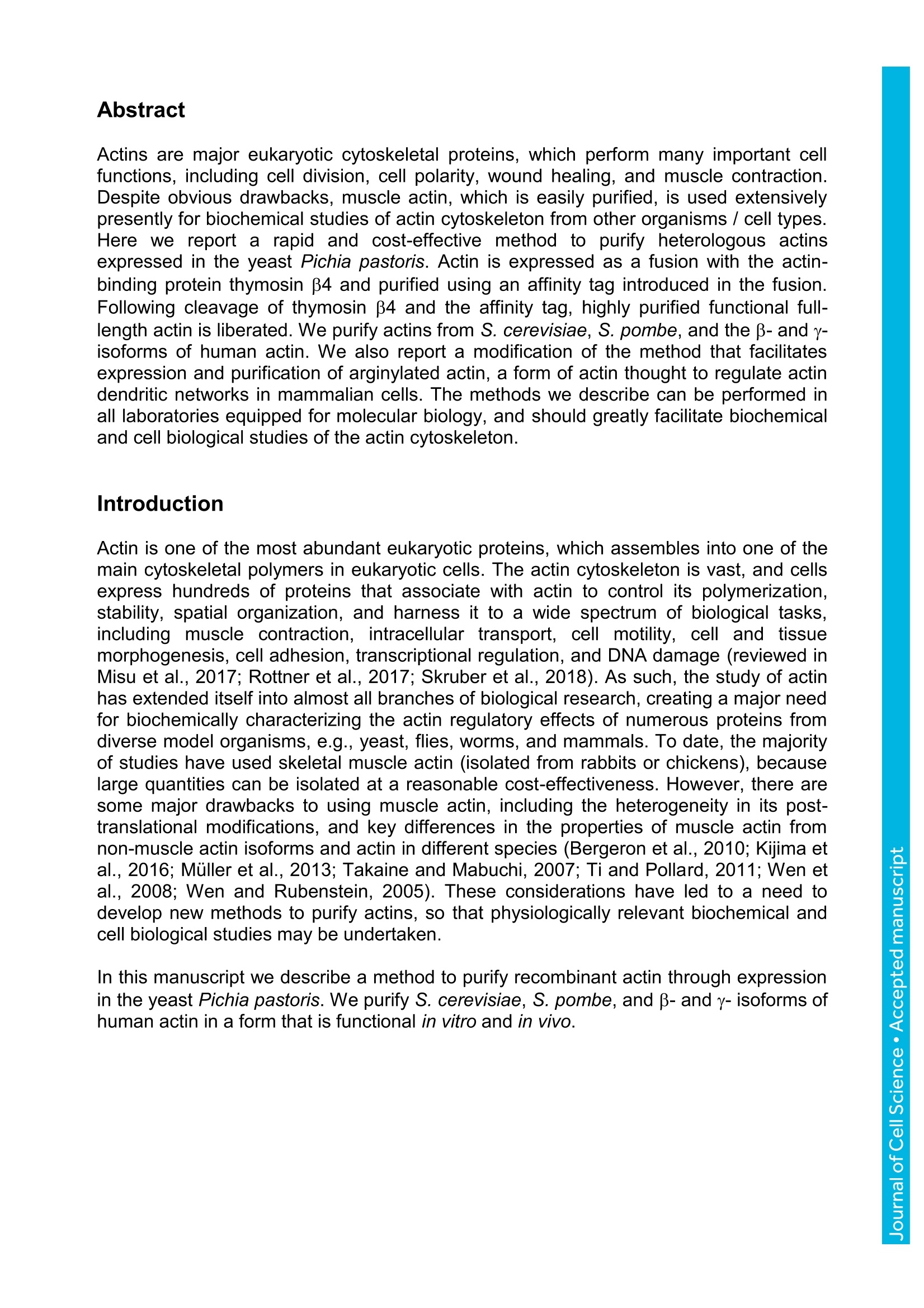
还剩21页未读,是否继续阅读?
继续免费阅读全文产品配置单
培安有限公司为您提供《酵母中肌动蛋白检测方案(研磨机)》,该方案主要用于生物发酵中肌动蛋白检测,参考标准《暂无》,《酵母中肌动蛋白检测方案(研磨机)》用到的仪器有SPEX大容量液氮冷冻研磨仪。
我要纠错
推荐专场
相关方案


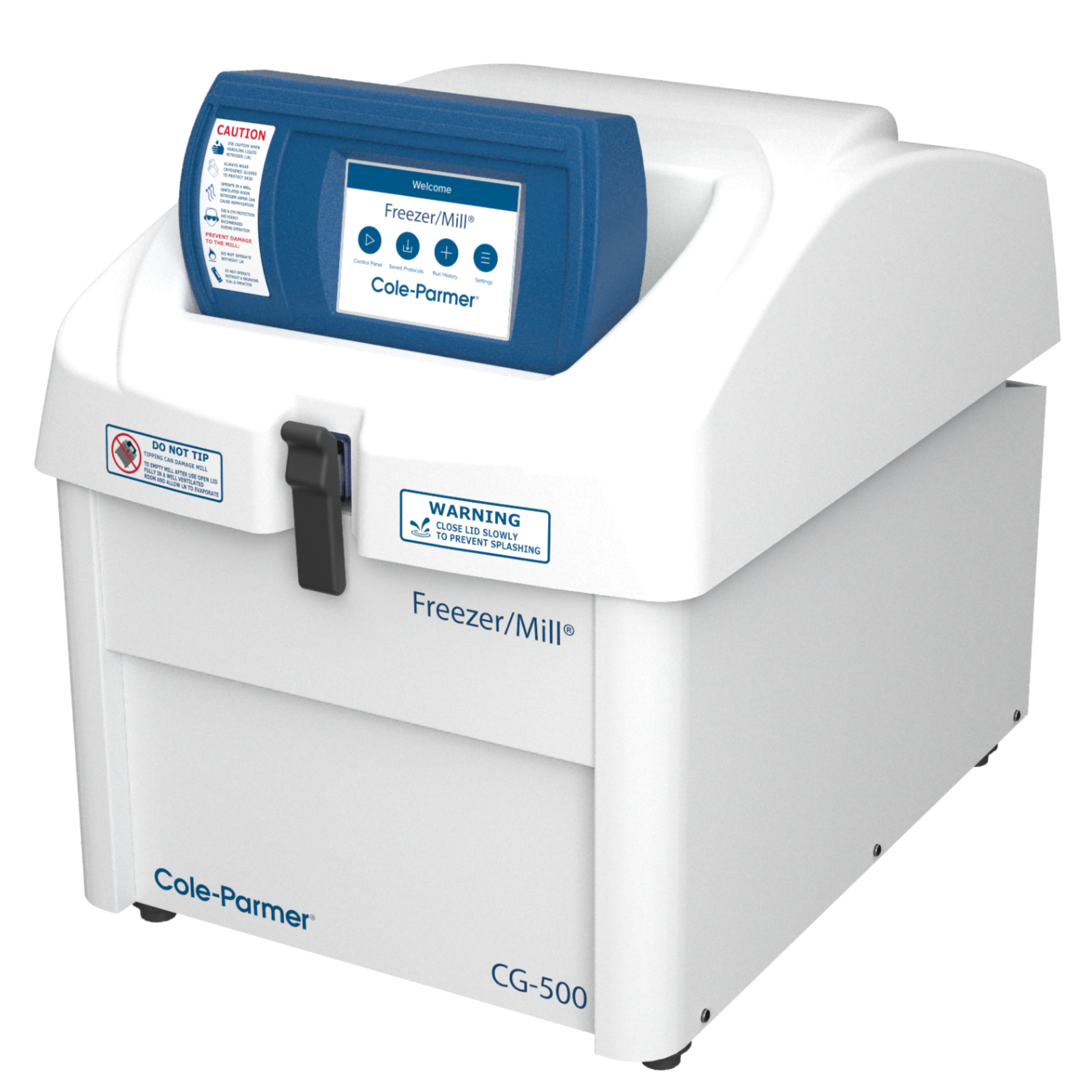

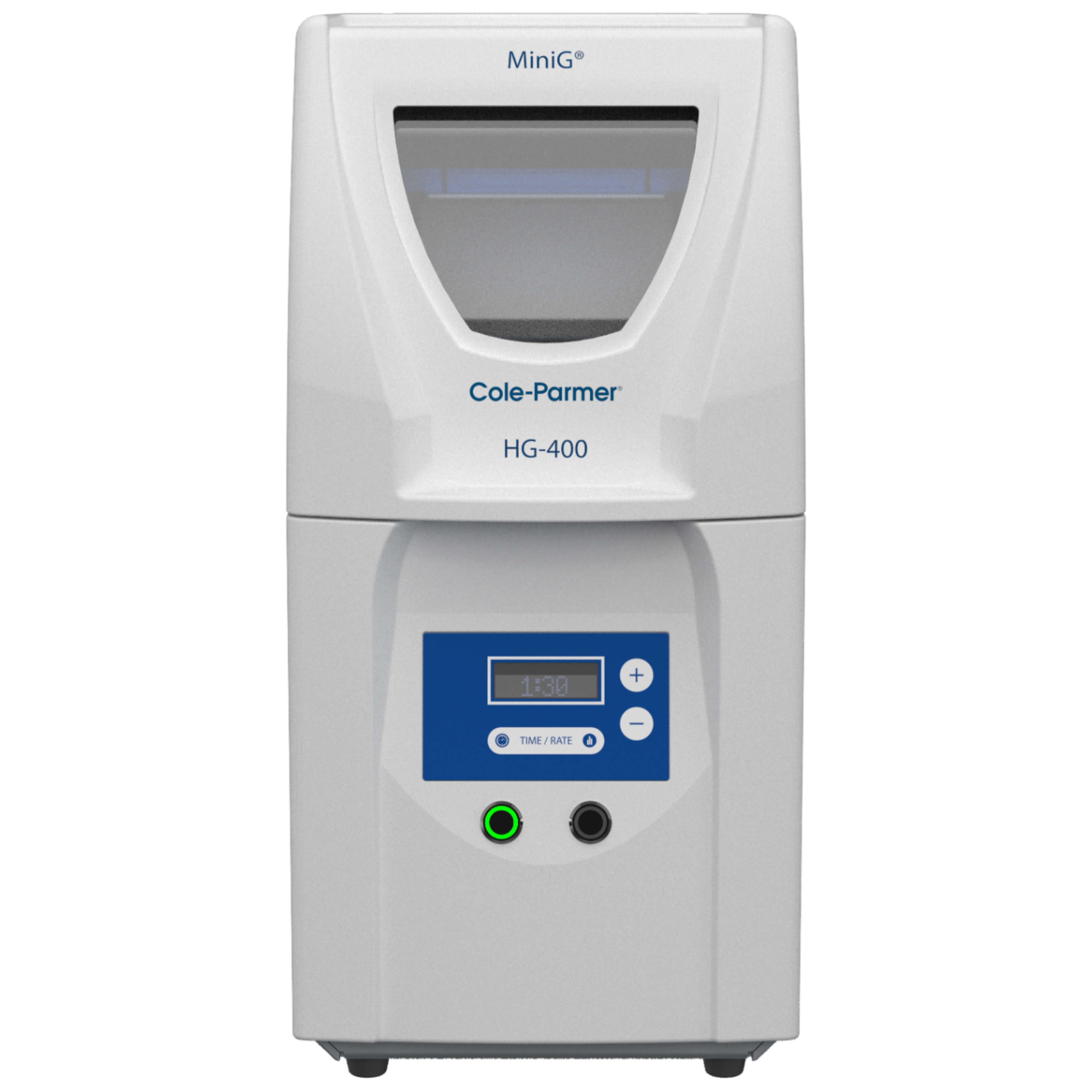
 咨询
咨询
